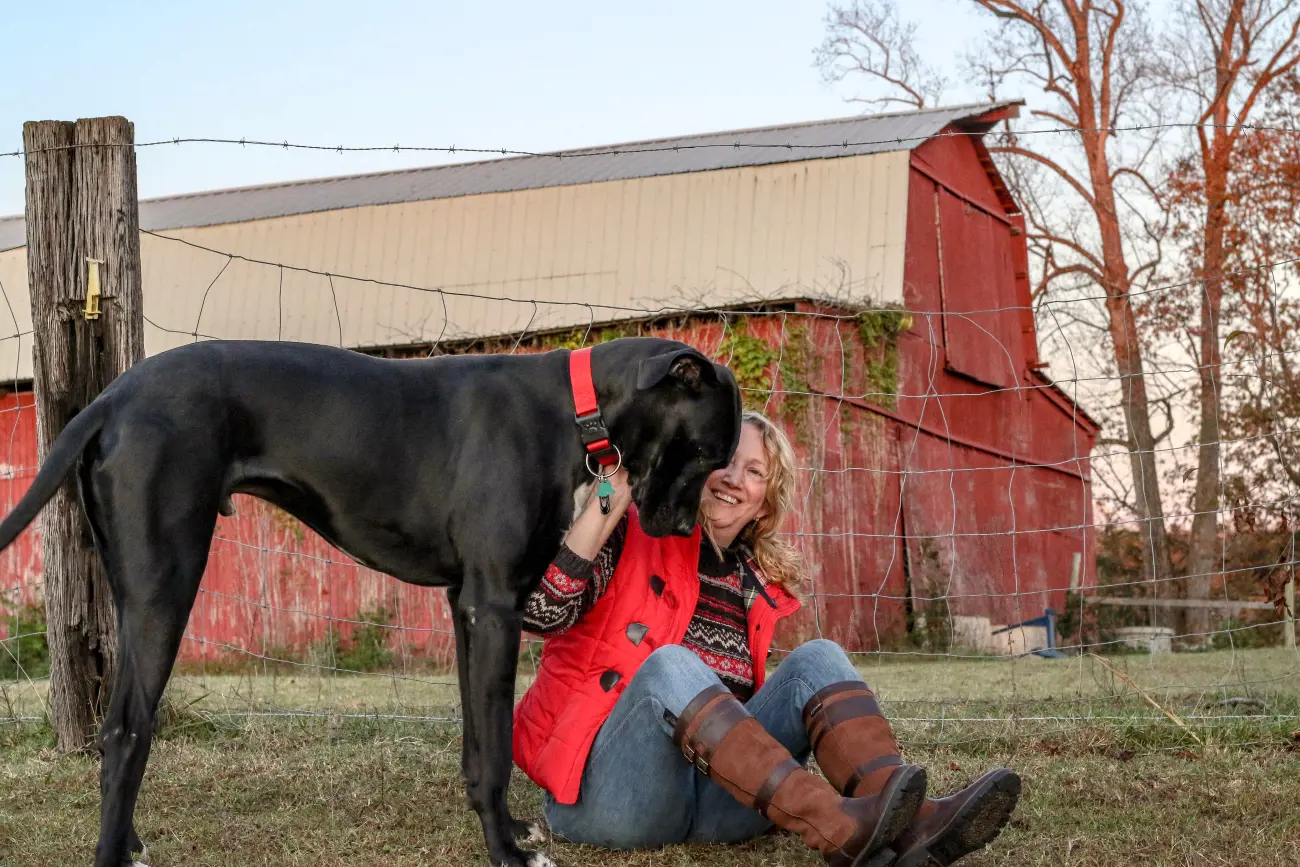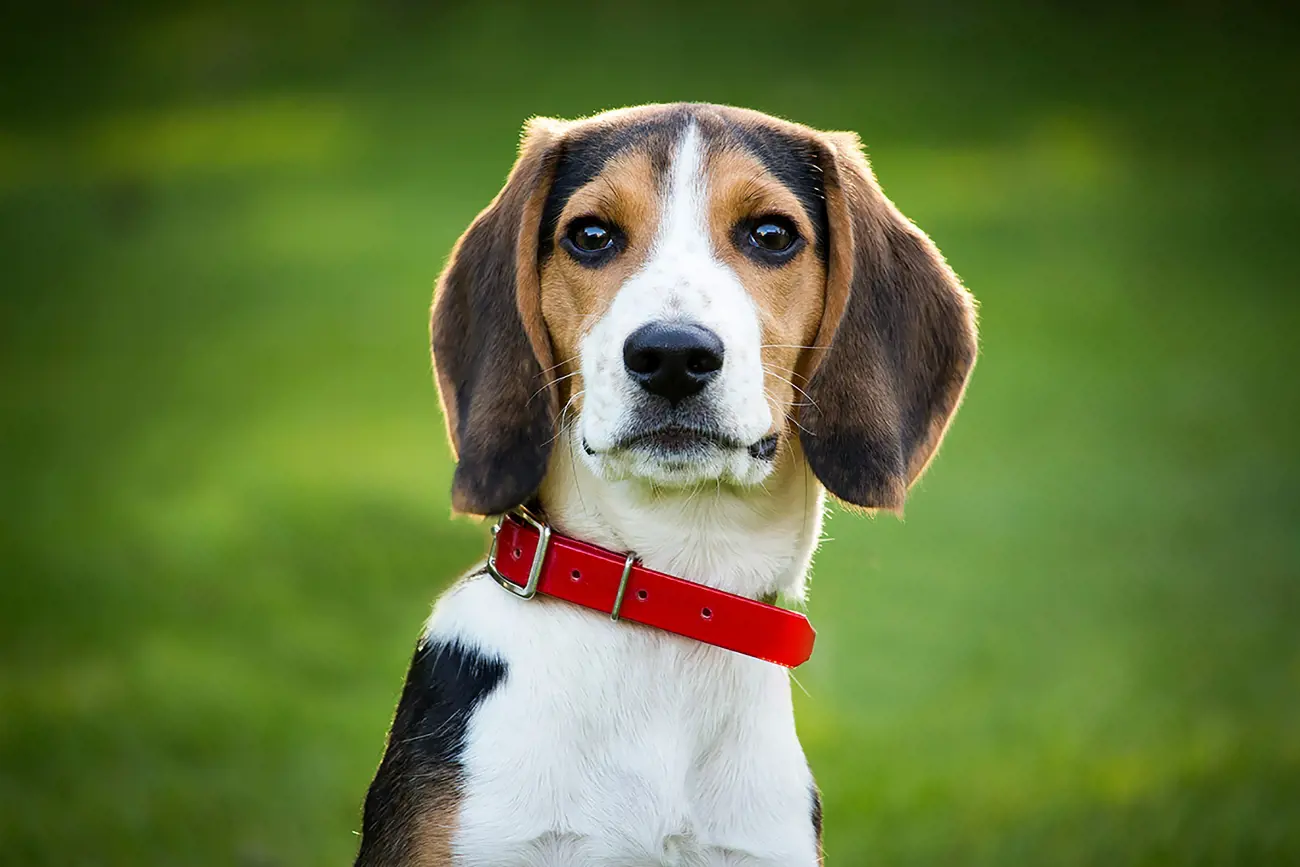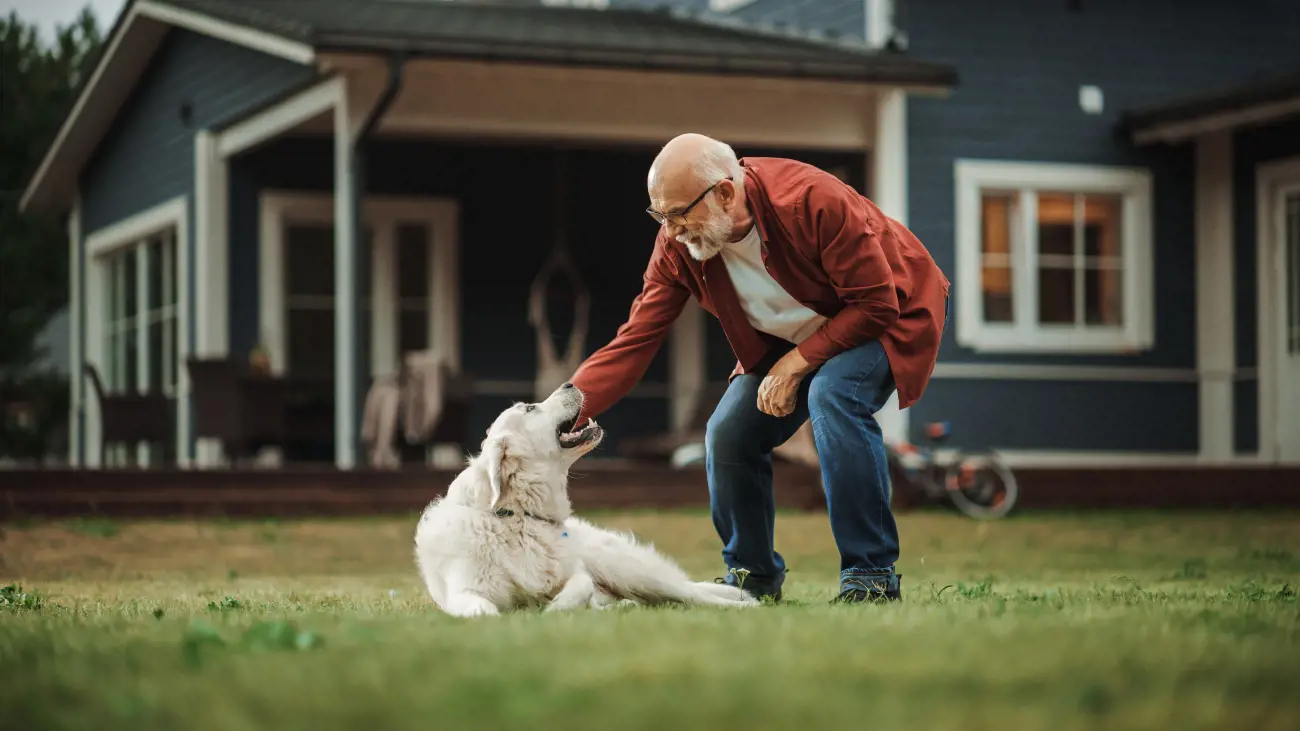Road safety tips for dogs
21st January, 2022

As a dog owner, sooner or later you will come up against the issue of roads – and of how your dog should behave in these potentially dangerous environments.
You may be fortunate enough to avoid any roads on your regular dog-walking routes. However, for most of us that probably won't be an option, and there are bound to be times when you and your pup will be walking beside traffic. So how can you ensure that you are keeping your furry friend safe in these spaces?
Is it about having complete control over your dog and restricting their movements – or training them to behave safely and responsibly around cars, bikes and other vehicles?
A bit of both, it turns out. On the one hand, you are legally obliged to have your dog on a lead on all designated roads. To back this up, however, we'd also recommend teaching your pooch some good basic road sense.
Having some dedicated dog insurance is also a good idea in case you do run into trouble while you’re out on your walks. Why not get a quick quote from Purely Pets today?

The lead is all-important
When it comes to leads and the law, the message is simple. The 1988 Road Traffic Act states that it is illegal for dogs to be on a ‘designated road’ without a lead.
What is a 'designated road'? Effectively, it's any road, street or lane down which vehicles may travel. So, in short, whenever you're on a route where vehicles are permitted, you need to be walking your dog on a lead.
If they find owners walking dogs on designated roads without a lead, local authorities may hand out a Dog Control Order, which comes with a maximum fine of £1,000.
There's further guidance in Rule 56 of the Highway Code, which states that dogs must not be allowed out on public roads on their own. Furthermore, when walking on a road, a path or even a pavement that is shared with pedestrians, cyclists and horse riders, a dog should be kept on a short lead.
However well‐behaved your pup may be, you should never remove that lead in traffic situations, except in cases where a fence or barrier fully prevents your dog from getting onto the road. You should keep your dog on a short lead – and station yourself so that you are walking on the road side of the pavement, creating a barrier between your dog and the carriageway.
There are a few exceptions to this short-lead rule. For example, dogs that are used for tending sheep or cattle as part of a business or trade, or animals that have been trained to work with the police or armed forces, are not obliged to be on a lead as the latter would prevent them from carrying out their duties effectively.
However, even in these cases, the exemption only applies while they are at work. If they are out for their evening stroll after finishing their day in the field, they'll need to be on a lead, just like any other dog.
But my dog is well-behaved around traffic!
Now, you may feel that you have trained your dog well enough, and instilled in them enough of a healthy fear of traffic, for them to be allowed to walk off the lead – particularly on the pavement, for example. You know the lane you walk down every evening – you know how safe and quiet it is. Surely it can do no harm to allow your dog off the lead for a while, and give them the freedom they crave?
Well, in fact, you will be breaking the law if you do this. And there is some logic to this blanket ban, no matter how road-savvy an individual dog might be.
Any dog might suffer a momentary break in their concentration, or a flash of disobedience, and dart quite uncharacteristically into the road. Perhaps, for example, they've seen a squirrel or cat that they just have to chase.
Well, that sudden movement could pose a big risk, both to the dog and to other road users, whether on foot, bike, horse or behind the wheel. Worst-case scenarios could even lead to six months in prison for owners and a £20,000 fine.
So, in short, you must keep your dog on a short, strong lead, properly attached to a well-fitting collar, whenever you are around traffic. Of course your dog is going to need some time off lead, running around and exploring the many sights, sounds and smells around them.
Just make sure that this special, off-lead time happens in areas away from traffic – and that, if there are roads nearby, your dog is safely separated from them by fences or railings.
What if your dog is injured while on the road?
Under section 170 of the 1988 Road Traffic Act, a driver who injures a dog with their car, motorbike or any other vehicle is legally obliged to give their name and address to the owner – or whoever is in charge of the animal at the time.
In the event that the dog is unaccompanied, the driver's responsibility is to report the incident to the police within the next 24 hours. If you find yourself involved in an accident like this, where you are the driver and have hit a dog on the road, you can find plenty more help and advice in our recent article - What to do if you hit a dog with your car.

Making sure your dog isn't a hazard to other road users
On the other side of the coin, as a responsible dog owner you need to always make sure that your pet isn't presenting a potential risk to other road users, be they pedestrians, motorists, cyclists or horse riders.
Legal cases can be filed against dog owners who are proved to have been at fault (through insufficient control over their dog), if the latter's behaviour causes an accident resulting in death, illness or injury.
To safeguard against this, it's best to take two key precautions – besides, as already mentioned, having your dog on a lead around all traffic.
One is to make sure that you have a canine insurance policy in place, including a third-party liability clause, at all times. This should help to cover some of the costs involved should your dog be deemed at fault for a road traffic accident, and you find yourself involved in a legal case.
Legal fees are always expensive: charges can quickly mount into tens of thousands of pounds if you don't have some proper insurance for your dog to help offset some or most of those costs.
The second essential course of action in averting dangerous and possibly expensive situations involving your dog and roads is, of course, to train your dog to behave sensibly. Let's look into this training in a little more detail.
Teaching road safety to your dog
Dogs aren't born with an inbuilt fear of traffic. However, road safety is something you can teach your pet relatively easily. Once you've got your dog walking well on a loose lead, you can start teaching them road safety techniques.
Obviously, the fact that you will have your dog on a lead, rather than roaming free, around traffic reduces the risk of an accident or mishap considerably.
However, it's still important to teach your canine some basic road sense, even if they will be spending much of their time around roads on a lead. Situations could arise – the lead or collar might fray and break, for example, or you could fall and drop the lead.
Perhaps you often walk the dog with a child and, in the moment of handing over the lead, your dog breaks free. In situations like these, it will be crucial that your dog knows to remain next to you and wait to have their lead reapplied, rather than dashing out into traffic.
But back to the on-lead training. For obvious reasons, it's best to practise dog road safety in a relatively quiet street, where there won't be too much traffic passing. You and your dog need time and space to concentrate, plus you don't want to be causing major traffic disruption.
The 'sit and wait' technique
There are a few ways of teaching your dog some basic safety, and by far the most common is the 'sit and wait' method – in which you simply teach your dog to sit and wait for your command before crossing a road.
This is easy to teach, and it's recommended that you do so relatively early on. It's believed that dogs should be exposed to traffic before they reach 16 weeks, as it's during these first few weeks and months that they are most sensitive and receptive to new stimuli and commands.
The first step is to teach your dog to stop safely when they come to the kerb. You can do this by using the 'stop' command, which they should be familiar with by now. If your dog tries to step out into the road before you've given them permission, you should gently but firmly pull them back.
This is one of those occasions where lots of praise will work well in instilling positive behaviour. Praise your dog when they come safely back to the kerb: this will lodge in their memory as the right behaviour in the situation. Repeat this little manoeuvre, and the praise that goes with it, until you're satisfied that your dog understands your 'stop' command, and what they need to do when they hear it. Repeat this at every kerb you come to, to really embed it in your dog's mind.
Once you're ready to step out onto the road, say ‘Let’s go’, or any similar command that your dog may be familiar with. They will then associate this second command as a signal to walk.

Be safe, be seen
Some other simple steps will help to keep your dog safe around traffic, especially during winter's darker evenings. And chief among these is making sure that your furry friend can be clearly seen.
Putting a bright, reflective collar on your dog will make it much easier for drivers to spot them, and take evasive action, during the hours of darkness. You can either go for a reflective neon collar, or choose one with built-in LED lights – the PDSA's online pet store has a few examples of the latter.
There are also a number of reflective and high-visibility coats on the market, so you can keep your dog warm and visible in one fell swoop.
And why not make sure that you can also be seen, by wearing some brightly coloured clothing or even a high-visibility jacket yourself?
Alongside all these tips above, we'd underline the importance of having some dog insurance in place. We've covered a lot of safety tips in this article, all of which will keep your dog as safe as possible out there on the roads.
However, if the worst ever did occur and your beloved pet was involved in an accident, having a dog insurance policy in place will help to cover the costs of whatever treatment was needed to help them quickly recover – and regain their zest for walkies.
Pet insurance from Purely Pets
Walking with your dog is one of the best parts of being an owner but it still carries a level of risk.
Traffic, other animals, water and more can all present risks for your canine companion when you’re out and about together. That’s why having a dog insurance policy in place can help protect you from the financial fallout of an accident.
Purely Pets has 15 different cover levels of award-winning lifetime dog insurance to choose from, to provide your dog with the care they deserve when the time comes.
We also offer a 24-Hour Vet Helpline to give you dog health advice around the clock.
Contact us today to arrange a quick quote for dog insurance.
Helpful Pages
Recent Posts

Why do Great Danes bury their heads?
12/03/25
Find out more about Beagles
28/02/25Pet Insurance Quote
- 98% claims paid *
- Claims paid directly to vets
- 24/7 vet video consultations
- Interest free monthly payments


